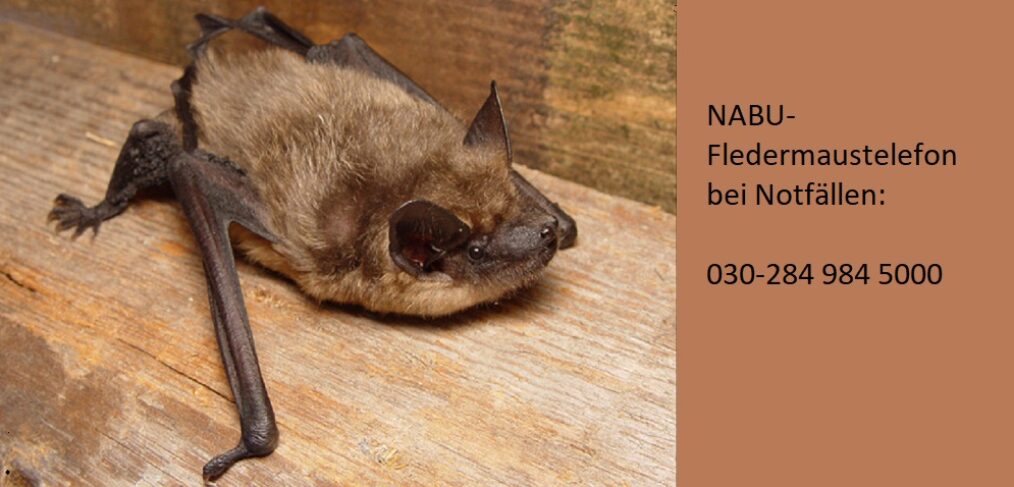
species of the week # 49 – serotine bat
Bats have been discredited since Covid19. Although the SARS-CoV-2 virus originated from a virus circulating in Asian bats, it shows considerable changes. According to previous knowledge, SARS-like coronaviruses always require intermediate hosts – i.e. other animal species – to give rise to a pathogen that can infect humans. Our native bats do not carry such viruses and can therefore continue to be rescued without hesitation in the event of car collisions or other accidents.
| Distribution status | Extremely rare |
| Remaining deposits | around Trier -Saarburg, Ludwigswinkel and Wasenach |
| Last sighting in Rhineland-Palatinate | current |
| Habitat | Villages and towns with good tree cover |
| Threat | Threats to renovation and wood preservatives, intensive agriculture |
The serotine bat is a typical house bat found in human settlements. It grows almost as large as a blackbird, with a wingspan of up to 38.1 cm and a body length of up to 8.2 cm, making it one of the three large bat species in Germany.
It is characterised by relatively long dorsal fur, a yellow-brown underside, a black face and short triangular ears rounded at the top. It is relatively common to see them shortly after sunset. Their silhouette with the in german eponymous broad wings is often clearly visible against the dusky evening sky. The slow flight with quiet wing beat determines the flight pattern of this cosy housemate. Serotine bats do not undertake rapid turning manoeuvres to track down prey. Due to their powerful ultrasonic echolocation, however, they rarely miss a prey insect.
The hunting grounds are often not too far away from the hibernation site. Preferred hunting grounds are not only street lamps, but also gardens and parks. Beetles, large butterflies, caddisflies, bipeds, hymenoptera and bugs serve as food.
Renovation work on roof trusses often unintentionally destroys the roosts, as the animals avoid the nest due to the use of wood treatment products. Access to the roof truss is also often bricked up or otherwise closed off.
The intensification of agriculture, the loss of field copses and insecticide use caused a considerable population decline since the middle of the 20th century. A reduction in pesticide use is absolutely necessary to safeguard the insect supply and thus the basis of life – not only for bats. Equally important is the comprehensive protection of summer and winter roosts, as well as raising public awareness of the beneficial subtenants.
Politically necessary:
– Reduce the use of pesticides
– Promotion of educational work on bat-friendly redevelopment
– Effective protection of existing bat roosts
– To protect against pandemics: Larger biotopes for wildlife and stricter regulations on wildlife and factory farming
To the other species of the week
Image: By Mnolf – Photo taken in Rum, Tirol, Austria, CC BY-SA 3.0, https://commons.wikimedia.org/w/index.php?curid=280473, added by Team Paulus
